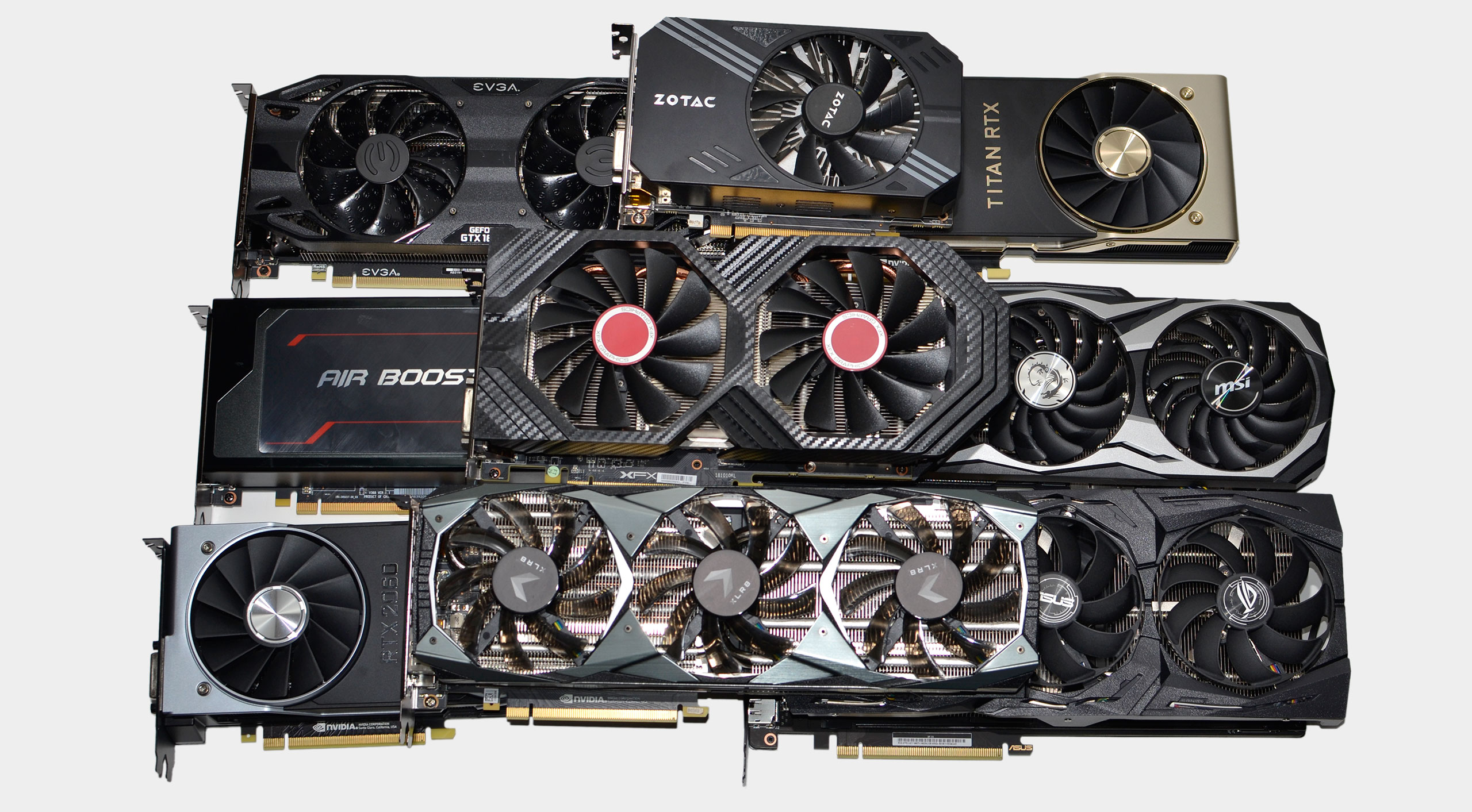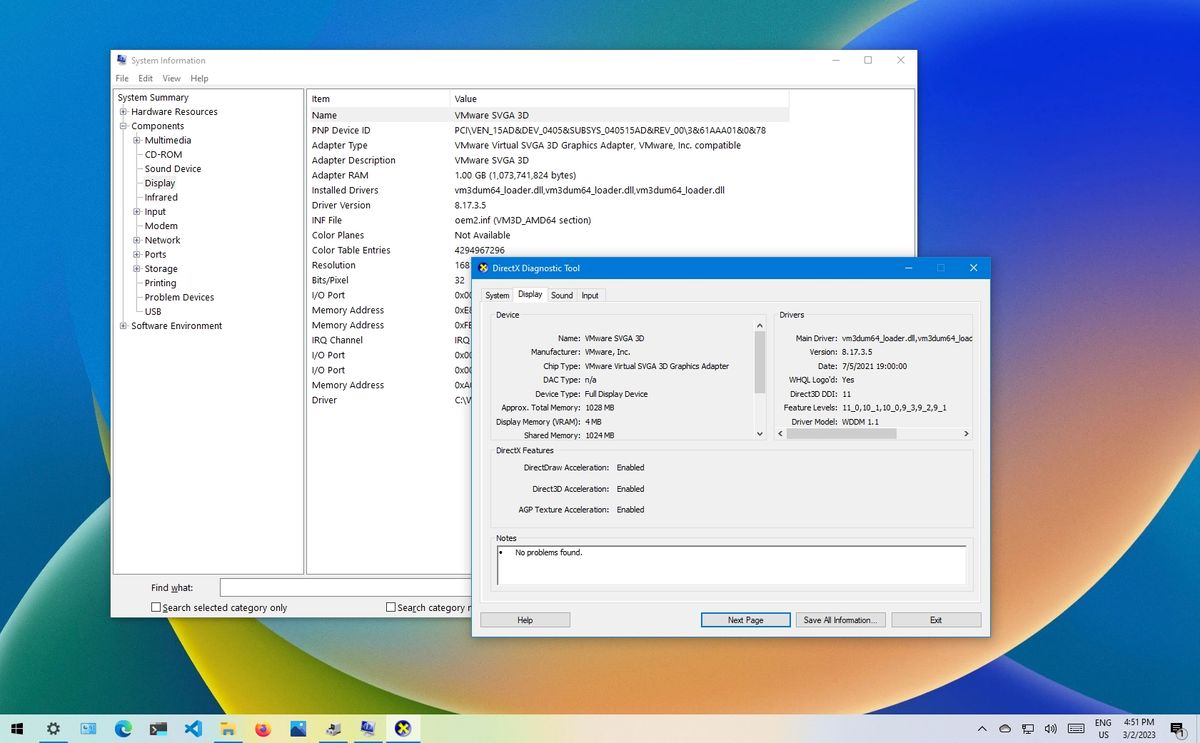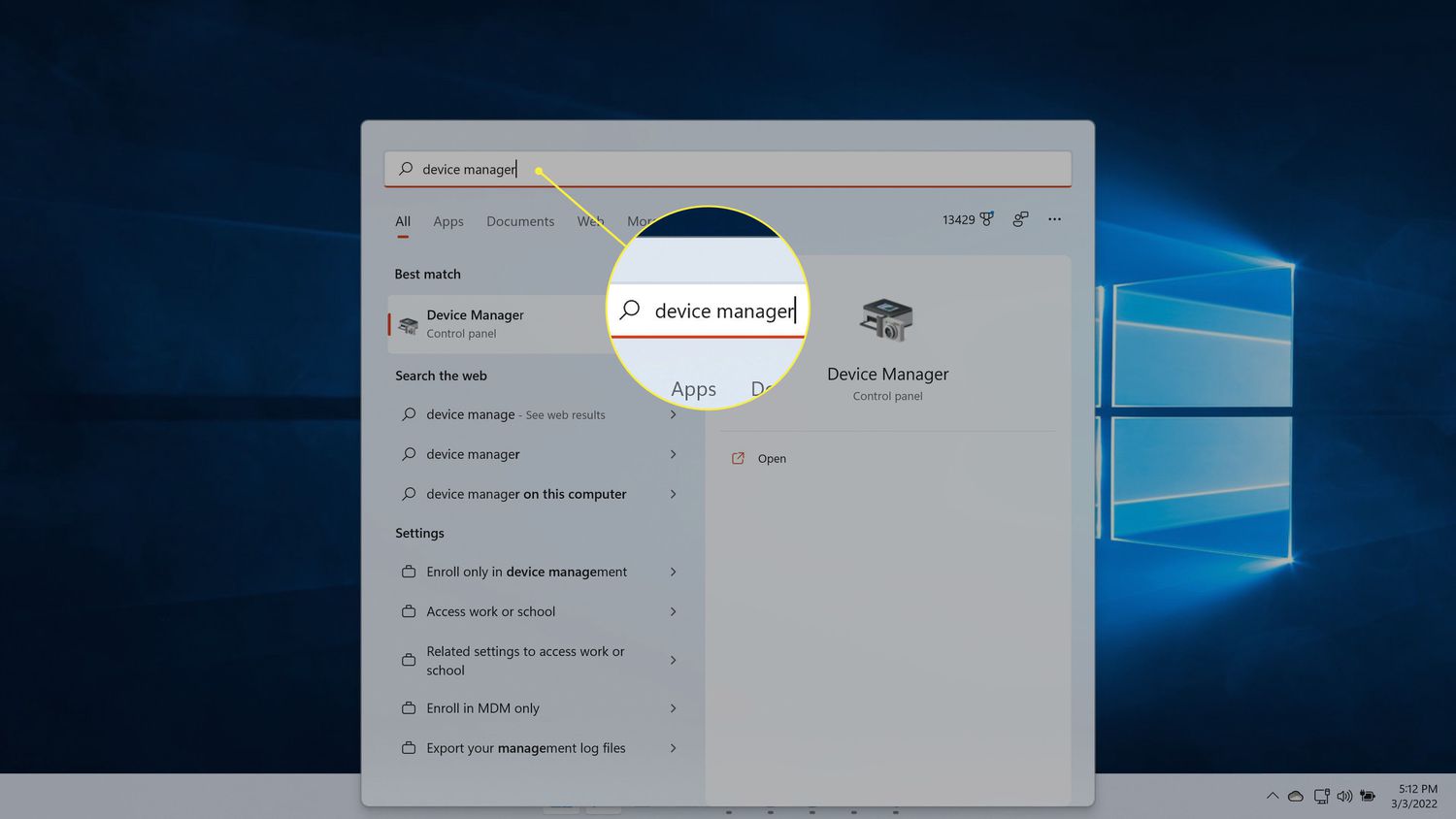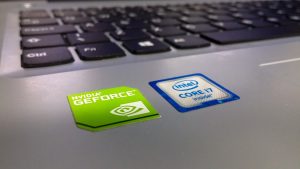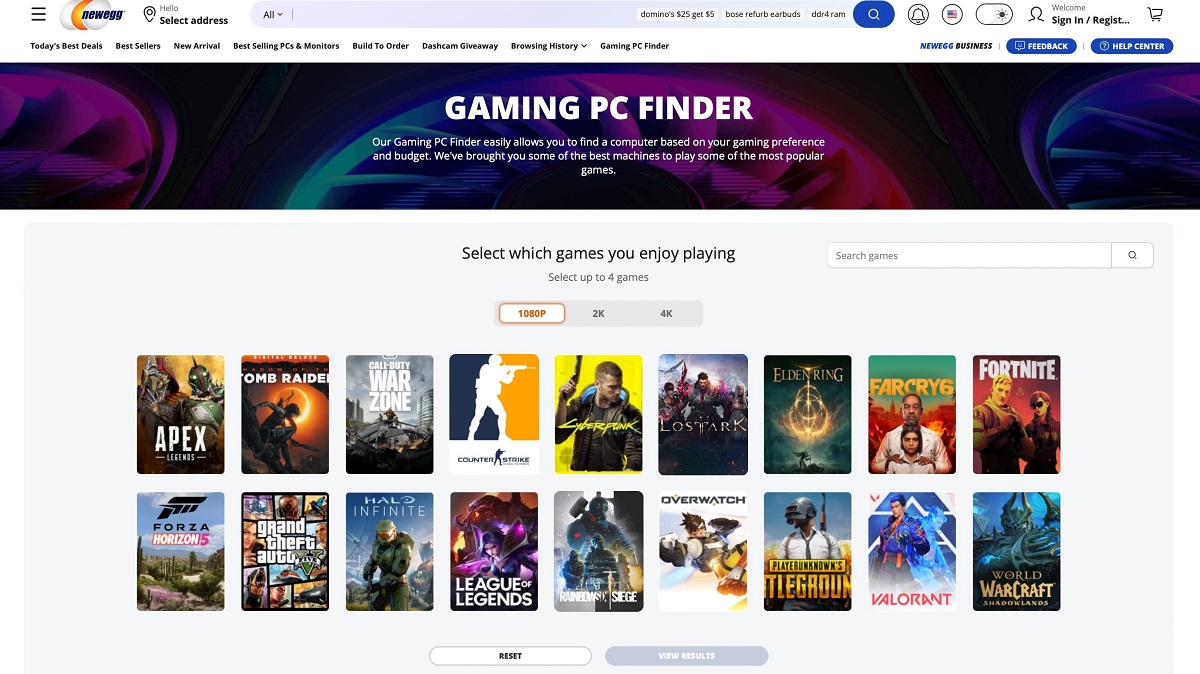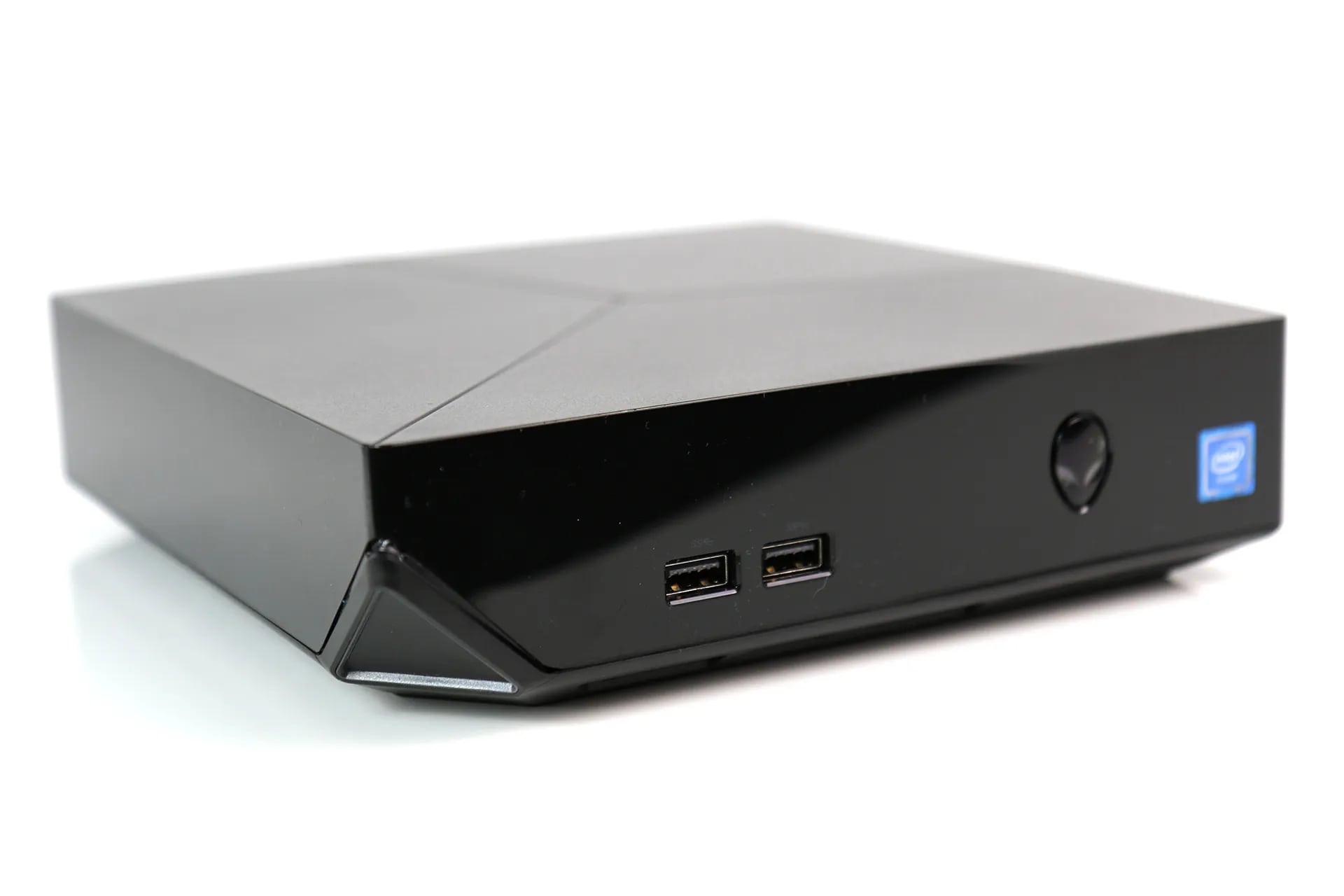Understanding Graphics Cards
Graphics cards are essential components in any modern computer system, especially for tasks that require intensive visual processing. Whether you’re a gamer, a content creator, or a professional designer, having the right graphics card can greatly enhance your computing experience. But before diving into the world of graphics cards, it’s important to have a basic understanding of what they are and how they work.
A graphics card, also known as a video card or GPU (Graphics Processing Unit), is a hardware component responsible for rendering images, videos, and animations on your computer’s monitor. It’s essentially a specialized electronic circuit that accelerates the rendering process and offloads the visual processing tasks from the computer’s CPU (Central Processing Unit).
Graphics cards consist of several key components, including the GPU, video memory (VRAM), cooling system, and various ports for connecting to the monitor and other devices. The GPU is the heart of the graphics card, responsible for performing complex calculations and rendering the images in real-time.
One important aspect to understand is the difference between integrated and dedicated graphics. Integrated graphics are built into the computer’s motherboard and share system memory with the CPU. They are suitable for basic tasks, such as web browsing and document editing, but lack the power needed for demanding applications.
Dedicated graphics cards, on the other hand, have their own dedicated memory and powerful GPUs, specifically designed for graphics-intensive tasks like gaming, video editing, and 3D rendering. These cards offer higher performance, better visual quality, and support for advanced features like virtual reality (VR) and ray tracing.
Additionally, graphics cards are classified based on their architecture, such as NVIDIA’s GeForce series and AMD’s Radeon series. Each architecture offers different features and performance levels, and it’s important to research and consider your specific needs before making a decision.
Understanding the specifications and technical jargon associated with graphics cards can be overwhelming at first. Terms like clock speed, memory bandwidth, and CUDA cores can seem like a foreign language. However, it’s important to familiarize yourself with these specifications as they directly impact the performance and capabilities of the graphics card.
Now that you have a basic understanding of what graphics cards are and how they work, it’s time to delve deeper into the factors to consider before choosing a graphics card that best suits your needs. In the following sections, we will explore compatibility, performance, gaming requirements, content creation, design work, and additional features that can elevate your graphics card experience.
Factors to Consider Before Choosing a Graphics Card
When it comes to selecting a graphics card, there are several crucial factors to consider in order to ensure that you choose the right one for your needs. Below, we will explore these key factors in detail:
1. Compatibility: It’s important to ensure that the graphics card you choose is compatible with your computer’s specifications, including the available PCIe slots, power supply capacity, and compatibility with your operating system. Be sure to check the requirements and recommendations provided by the manufacturer before making a purchase.
2. Performance vs. Budget: Finding the perfect balance between performance and price is essential. Higher-end graphics cards offer more power and advanced features, but they also come with a higher price tag. Consider your budget carefully and prioritize the features that matter the most to you to strike the right balance.
3. Gaming Requirements: If you’re a gamer, it’s important to consider the specific requirements of the games you play. Research the recommended system requirements for your favorite games and choose a graphics card that can handle them comfortably. Look for features like high frame rates, VR support, and compatibility with popular gaming technologies.
4. Content Creation and Video Editing: For professionals who work with graphic-intensive applications like video editing software or 3D modeling programs, a powerful graphics card is essential. Look for cards with ample VRAM, high compute performance, and support for GPU-accelerated tasks to ensure smooth and efficient workflow.
5. Design and Animation Work: Designers and animators require graphics cards that can handle complex visual rendering tasks. Look for cards with fast rendering capabilities, support for advanced shading techniques, and compatibility with popular design software like Adobe Creative Suite.
6. CAD and 3D Modeling: If you work in architecture, engineering, or other fields that involve CAD software or 3D modeling, choose a graphics card specifically designed for these applications. Look for cards with optimized drivers, extensive viewport performance, and compatibility with industry-standard software like AutoCAD or SolidWorks.
7. Additional Features: Consider any additional features that may be important to you, such as virtual reality (VR) support, real-time ray tracing, or multi-monitor setups. These features can greatly enhance your overall experience, but they may also add to the cost.
8. Upgrading Your Graphics Card: If you’re considering upgrading your current graphics card, make sure to check compatibility with other components in your system, such as the power supply and motherboard. Also, take into account any additional cooling requirements or space limitations in your computer case.
By carefully considering these factors, you can make an informed decision and choose a graphics card that meets your specific needs. In the following sections, we will further explore the different requirements for gaming, content creation, design work, and other specialized fields.
Graphics Card Compatibility
When choosing a graphics card, compatibility is a crucial factor to consider. Ensuring that the graphics card is compatible with your computer’s specifications is essential for proper installation and optimal performance.
One of the first aspects to consider is the PCIe (Peripheral Component Interconnect Express) slot on your motherboard. Most modern graphics cards require a PCIe x16 slot, which provides the necessary bandwidth for high-speed data transfer between the graphics card and the motherboard. It’s important to check if your motherboard has an available PCIe x16 slot and if it supports the specific version of PCIe required by the graphics card.
Another consideration is the power supply unit (PSU) in your computer. Graphics cards typically require additional power beyond what the PCIe slot provides. They may need one or more PCIe power connectors, usually in the form of 6-pin or 8-pin connectors. Ensure that your power supply unit has the necessary connectors and sufficient wattage to handle the graphics card’s power requirements.
The physical dimensions of the graphics card should also be taken into account. Some graphics cards, especially high-end models, can be quite large and may not fit in smaller computer cases. Measure the available space in your case to ensure that the graphics card you choose will fit properly without obstructing other components or airflow.
It’s essential to consider the operating system (OS) compatibility as well. Graphics card manufacturers provide drivers specific to different operating systems, so check if the graphics card you’re considering supports your OS. Ensure that you have the necessary software updates and compatible drivers to maximize performance and stability.
Additionally, check the VRAM (Video Random Access Memory) requirements of your intended use. VRAM is the dedicated memory on the graphics card that stores and processes the visual data. Different applications have varying demands for VRAM. For example, gaming at higher resolutions or with advanced graphics settings typically requires more VRAM. Ensure that the graphics card you choose has sufficient VRAM for your needs.
Finally, consider any additional ports or connectivity options you may require. Graphics cards typically offer DisplayPort, HDMI, and DVI connectors for connecting monitors and other display devices. Verify that the graphics card has the necessary ports and that they are compatible with your monitor or other peripherals.
It’s always advisable to consult the manufacturer’s specifications and recommendations for guaranteed compatibility. Researching user forums and seeking expert advice can also help ensure that the graphics card you choose is compatible with your specific computer setup.
By taking into account factors such as PCIe compatibility, power supply, physical dimensions, operating system support, VRAM requirements, and connectivity options, you can make an informed decision and choose a graphics card that seamlessly integrates into your computer system.
Performance vs. Budget: Finding the Right Balance
When selecting a graphics card, finding the perfect balance between performance and budget is crucial. While it’s tempting to go for the most powerful and expensive card on the market, it may not always be necessary or cost-effective for your needs.
Understanding your specific requirements and the tasks you intend to perform with the graphics card is essential. For casual browsing, video streaming, and basic productivity tasks, a budget-friendly graphics card with integrated graphics or a lower-end dedicated card may suffice.
If you’re a gamer, consider the types of games you play and their system requirements. High-end games with demanding graphics may require a more powerful graphics card to ensure smooth gameplay at higher resolutions and settings. However, keep in mind that not every game requires the latest and greatest card. Research the recommended system requirements for your favorite games and choose a card that meets those specifications without breaking the bank.
Graphics cards are constantly evolving, with new models being released regularly. As newer generations emerge, the previous generation often sees a decrease in price while still offering respectable performance. Consider looking into older generation cards or mid-range models from the current generation to find a sweet spot in terms of cost and performance.
Another aspect to consider is the trade-off between the graphics card and other components in your system. Investing a significant portion of your budget on a high-end graphics card may leave you with limited funds for other components, such as the CPU, memory, or storage. Ensure that your system is well-balanced and that all components work harmoniously to avoid bottlenecks or performance inconsistencies.
It’s worth noting that future-proofing is a consideration as well. While it may be tempting to splurge on the most powerful graphics card available to ensure longevity, it’s important to weigh the cost against the expected lifespan of the card and your future upgrade plans. Technology advances quickly, and what may be top-of-the-line today could be mid-range or entry-level in a couple of years.
Research is key when finding the right balance between performance and budget. Reading reviews, comparing benchmarks, and considering real-world performance tests can help you make an informed decision. Additionally, setting a budget and prioritizing the features that matter most to you can guide your selection process.
Lastly, keep an eye out for any deals or sales that may be available. Graphics cards often go on sale during holiday seasons or when newer models are released, offering an opportunity to upgrade at a discounted price.
By carefully considering your needs, researching options, and comparing performance and prices, you can find the optimal balance between performance and budget for your graphics card purchase.
Gaming Requirements: Choosing a Graphics Card for Gamers
For gamers, choosing the right graphics card is crucial to ensure an immersive gaming experience with smooth frame rates and stunning visual quality. There are several factors to consider when selecting a graphics card specifically tailored to meet gaming requirements.
One of the primary considerations is the system requirements of the games you plan to play. Different games have varying demands when it comes to graphics processing power and memory. Research the recommended system requirements for your favorite games and choose a graphics card that can comfortably handle those requirements.
Resolution and refresh rate are also important factors to consider. If you’re gaming at 1080p resolution, a mid-range graphics card should be sufficient for most games. However, if you’re aiming for higher resolutions like 1440p or 4K, you’ll need a more powerful card to achieve a smooth gaming experience at those resolutions. Additionally, if you have a high refresh rate monitor, such as 144Hz or 240Hz, you’ll need a graphics card capable of delivering the necessary frame rates to take full advantage of your monitor’s capabilities.
Another consideration is the specific features and technologies offered by the graphics card. Many modern games can take advantage of advanced graphical techniques such as real-time ray tracing and DLSS (Deep Learning Super Sampling). Ensure that the graphics card you choose supports these features if you want to fully immerse yourself in cutting-edge visuals.
Memory is also a crucial factor. Games with high-resolution textures and complex graphics can require a significant amount of VRAM. Aim for a graphics card with ample VRAM to avoid potential performance bottlenecks. Cards with at least 6GB or 8GB of VRAM are generally recommended for smooth gameplay at 1080p, while higher resolutions may require even more VRAM.
It’s also important to consider the cooling and power requirements of the graphics card. High-performance graphics cards can generate a significant amount of heat, so adequate cooling is essential to maintain optimal performance and prevent overheating. Additionally, powerful graphics cards often require additional power connectors from the power supply unit. Ensure that your power supply can supply enough power and has the necessary connectors to support the graphics card you choose.
Furthermore, consider the aesthetics and additional features of the graphics card. Many gaming-oriented cards feature customizable RGB lighting, sleek designs, and additional software features. These features may not influence performance directly, but they can enhance the overall gaming experience and allow you to personalize your setup to your liking.
Lastly, take into account your future gaming plans and potential upgrade considerations. If you’re aiming for longevity, opting for a slightly more powerful graphics card than what is currently required for your games can help future-proof your system and ensure smooth performance in upcoming titles.
By considering the system requirements of your games, resolution and refresh rate, specific features, VRAM, cooling and power requirements, aesthetics, and future upgrade plans, you can choose a graphics card that is perfectly suited to meet your gaming requirements, delivering an exceptional gaming experience for years to come.
Graphics Card for Content Creation and Video Editing
For content creators and video editors, having a powerful graphics card is essential to handle the demanding tasks involved in rendering and processing high-resolution videos and complex visual effects. When choosing a graphics card for content creation and video editing, several factors should be taken into consideration.
One of the primary considerations is the amount of VRAM (Video Random Access Memory) available on the graphics card. Content creation and video editing software often require a significant amount of VRAM to efficiently handle large video files, high-resolution textures, and complex visual effects. Opt for a graphics card with ample VRAM to ensure smooth and efficient workflow without experiencing performance bottlenecks.
Compute performance is also crucial. Graphics cards with high computational capabilities can significantly accelerate rendering times and reduce processing time for effects such as color grading, motion tracking, and video encoding. Look for graphics cards with a higher number of CUDA cores (NVIDIA) or Stream Processors (AMD) as an indicator of superior computational power.
Another factor to consider is the level of driver optimization and support for your preferred software applications. Different graphics card manufacturers have varying levels of compatibility and optimization for content creation and video editing software. Research and read reviews to ensure that the graphics card you choose is well-suited for your specific software requirements.
The cooling system of the graphics card is also important. Content creation and video editing tasks can put a significant load on the graphics card, generating heat. Opt for a card with a robust cooling solution, such as multiple fans or a high-quality heatsink, to ensure that the card remains cool during intense rendering sessions and to maintain optimal performance.
Connectivity options should also be considered. Look for graphics cards that offer multiple DisplayPort or HDMI outputs, allowing you to connect multiple monitors or devices for efficient workflow and multitasking. Having multiple monitors can enhance productivity by providing ample screen real estate for video editing timelines, previews, and other software tools.
Real-time playback is often crucial for content creators and video editors to evaluate and make adjustments on the fly. Look for graphics cards that offer excellent real-time performance and support for technologies like GPU acceleration, which can significantly speed up the editing process by offloading the processing tasks to the graphics card.
Lastly, it’s important to consider the future scalability and upgradeability of the graphics card. As technology advances and software requirements increase, having a graphics card that can be easily upgraded or expanded upon in the future can help extend the lifespan of your system without the need for a complete overhaul.
By considering factors such as VRAM, compute performance, driver support, cooling system, connectivity options, real-time playback capabilities, and upgradeability, you can choose a graphics card that is well-suited for content creation and video editing, allowing for smoother workflow and enhanced productivity in your creative endeavors.
Graphics Card for Design and Animation Work
For designers and animators, having a graphics card that can handle the complex visual rendering tasks involved in design and animation work is crucial. When choosing a graphics card for design and animation, several key factors should be taken into consideration.
One of the primary considerations is the graphics card’s compute performance. Design and animation software heavily rely on the GPU’s computational capabilities for tasks such as rendering 3D models, creating visual effects, and simulating physics. Look for a graphics card with a higher number of CUDA cores (NVIDIA) or Stream Processors (AMD) as an indicator of superior computational power. This will ensure faster rendering times and smoother real-time previews.
Another important consideration is the amount of VRAM (Video Random Access Memory) available on the graphics card. Design and animation projects often involve working with large files, high-resolution textures, and complex scenes. Opting for a graphics card with ample VRAM will provide the necessary resources to handle such demanding tasks efficiently, without encountering performance issues or limitations.
Driver support and compatibility for design and animation software are crucial factors to consider. Different graphics card manufacturers have varying degrees of optimization and support for popular design and animation applications. Research and read reviews to ensure that the graphics card you choose is highly compatible and offers excellent performance with your preferred software.
Real-time performance is another important consideration. Designers and animators often require real-time feedback to evaluate their work, make adjustments, and ensure smooth animation playback. Look for graphics cards that offer excellent real-time performance and support for technologies like GPU acceleration, which can significantly speed up the creative process and improve productivity.
The cooling system of the graphics card is also a vital factor to consider. Design and animation tasks can put a high load on the GPU, generating heat. Look for a graphics card with a robust cooling solution, such as multiple fans or a high-quality heatsink, to ensure that the card remains cool during intensive rendering sessions and to maintain optimal performance and longevity.
Connectivity options should also be taken into account. Graphics cards with multiple DisplayPort or HDMI outputs allow for the efficient use of multiple monitors, enabling designers and animators to have ample screen real estate for viewing their projects, accessing tools, and working in a multi-tasking environment.
Lastly, consider the future scalability and upgradeability of the graphics card. As software applications and projects become more demanding over time, having a graphics card that can be easily upgraded or expanded upon can help extend the lifespan of your system and keep up with evolving technologies, without requiring a complete system overhaul.
By considering factors such as compute performance, VRAM, driver support, real-time performance, cooling system, connectivity options, and upgradeability, you can choose a graphics card that is tailored to meet the needs of design and animation work, allowing for smoother workflow, faster rendering, and enhanced creativity in your projects.
Graphics Card for CAD and 3D Modeling
When it comes to CAD (Computer-Aided Design) and 3D modeling work, having a high-performance graphics card is essential to handle the complex calculations and rendering tasks involved in these applications. When choosing a graphics card for CAD and 3D modeling work, there are several key factors to consider.
One of the primary considerations is the graphics card’s compute performance. CAD and 3D modeling applications heavily rely on the GPU’s computational capabilities to render complex 3D models, perform simulations, and handle intricate visual effects. Look for a graphics card with a high number of CUDA cores (NVIDIA) or Stream Processors (AMD) as this indicates superior computational power, which can significantly improve rendering times and overall workflow efficiency.
Another important factor to consider is the amount of VRAM (Video Random Access Memory) available on the graphics card. CAD and 3D modeling software often require substantial VRAM to efficiently handle large and complex models, high-resolution textures, and intricate scenes. Opting for a graphics card with ample VRAM will ensure smoother navigation, real-time rendering, and more efficient manipulation of these complex 3D models.
Driver support and compatibility with CAD and 3D modeling software are crucial considerations. Different graphics card manufacturers may have varying degrees of optimization and support for popular CAD and 3D modeling applications. It’s important to research and read reviews to ensure that the graphics card you choose offers excellent performance, compatibility, and stability with your preferred software.
Real-time performance is also important for CAD and 3D modeling work. Smooth real-time feedback is essential for evaluating designs, making adjustments, and assessing the overall aesthetic appeal of the models. Look for graphics cards that offer excellent real-time performance and support for GPU acceleration technologies, as this can significantly improve the responsiveness of the software and enhance productivity.
The cooling system of the graphics card is another vital consideration. CAD and 3D modeling applications can put a significant load on the GPU, leading to higher operating temperatures. Look for a graphics card with an efficient cooling solution, such as multiple fans or a high-quality heatsink, to ensure that the card remains cool under heavy workloads, maintaining optimal performance and minimizing the risk of overheating.
Connectivity options should also be taken into account. Graphics cards with multiple DisplayPort or HDMI outputs allow for the efficient use of multiple monitors, providing designers and modelers with ample screen real estate for viewing and manipulating their projects, accessing tools, and working in a multitasking environment.
Lastly, consider the future scalability and upgradeability of the graphics card. As CAD and 3D modeling software continue to advance, the demand for more powerful hardware may increase. Having a graphics card that can be easily upgraded or expanded upon can help extend the lifespan of your system, allowing you to keep up with evolving software requirements without the need for a complete system replacement.
By carefully considering factors such as compute performance, VRAM, driver support, real-time performance, cooling system, connectivity options, and upgradeability, you can choose a graphics card that is specifically tailored to meet the demands of CAD and 3D modeling work, providing you with a smooth and efficient workflow, improved rendering capabilities, and enhanced creativity in your designs and models.
Additional Features: VR, Ray Tracing, and More
When choosing a graphics card, it’s important to consider the additional features and technologies that can enhance your visual experience and take your graphics performance to the next level. Two of the most notable features to consider are Virtual Reality (VR) support and real-time ray tracing.
Virtual Reality (VR) has become increasingly popular in gaming and other applications. If you’re interested in exploring virtual reality experiences, it’s crucial to choose a graphics card that is specifically optimized for VR. Look for graphics cards with VR-ready certifications, such as NVIDIA’s VR Ready or AMD’s Radeon VR Ready Premium, which ensure smooth and immersive VR experiences with minimal latency.
Real-time ray tracing is a cutting-edge technology that simulates the behavior of light, allowing for incredibly realistic lighting effects and reflections in 3D environments. Graphics cards that support real-time ray tracing can provide stunning visual fidelity and immerse you in highly detailed and lifelike scenes. NVIDIA’s RTX series and AMD’s Radeon RX 6000 series are examples of graphics cards that offer hardware acceleration for real-time ray tracing.
Another feature to consider is video encoding and decoding support. Some graphics cards offer built-in hardware encoders and decoders, such as NVIDIA’s NVENC or AMD’s VCE, which can significantly speed up video encoding and decoding processes. This can be beneficial for content creators who regularly process and export videos.
Multiple monitor support is another important consideration, especially for professionals who require extensive screen real estate. Graphics cards with multiple DisplayPort or HDMI outputs allow you to connect multiple monitors, enabling you to have a seamless and efficient workflow with expanded workspace for viewing multiple applications, timelines, or reference materials simultaneously.
Some graphics cards also come equipped with additional software packages, such as graphics optimization tools or overclocking utilities. These features can provide greater control and customization options, allowing you to fine-tune the performance of your graphics card according to your specific needs and preferences.
It’s worth noting that future-proofing is a consideration as well. While some of these additional features may not be fully utilized by current software applications, as technology continues to advance, support for these features is expected to grow. Investing in a graphics card that offers cutting-edge features can help ensure that your system remains capable and relevant for future software advancements.
When considering graphics cards with additional features, it’s important to factor in the cost. Cards with these advanced capabilities tend to come at a higher price point. Evaluate your needs, budget, and long-term goals to determine which additional features are worth the investment for your specific use case.
By carefully considering the additional features that are important to you, such as VR support, real-time ray tracing, video encoding/decoding capabilities, multiple monitor support, and software packages, you can choose a graphics card that aligns with your needs and enhances your visual experience in a way that is tailored to your interests and requirements.
Upgrading Your Graphics Card: What to Keep in Mind
Upgrading your graphics card can be a great way to breathe new life into your computer system and improve its performance in graphics-intensive tasks. However, there are several factors to keep in mind when considering a graphics card upgrade.
First and foremost, it’s important to assess the compatibility of the graphics card with your existing system. Check the PCIe slot on your motherboard to ensure compatibility with the graphics card you plan to upgrade to. Additionally, consider the power supply unit (PSU). Upgrading to a more powerful graphics card may require a higher wattage power supply or additional PCIe power connectors. Make sure your PSU can handle the power requirements of the new card.
Consider the physical dimensions of the graphics card as well. Some high-end graphics cards can be quite large and may not fit in smaller computer cases. Measure the available space in your case to ensure that the new graphics card will fit properly without obstructing other components or airflow.
Research the performance gains you can expect from the new graphics card compared to your current one. Look at benchmark comparisons and real-world performance tests to determine the level of improvement you can expect. This will help you assess whether the upgrade is worth the cost and effort.
Take into account your specific needs and use cases. If you’re primarily a gamer, consider the system requirements of the games you play and the level of performance improvement the new graphics card can offer. If you’re a content creator or professional, look for features like faster rendering times, improved real-time performance, and greater VRAM capacity that can enhance your workflow and productivity.
Budget is another crucial factor. Determine how much you’re willing to spend on a graphics card upgrade and consider the cost-to-performance ratio. It’s important to strike the right balance between your budget and the level of performance improvement you want to achieve. Consider both the short-term benefits and the long-term investment value of the upgrade.
Future-proofing is another consideration. Technology advances quickly, and newer graphics cards often come with additional features, improved performance, and better compatibility with future software. While it may be more expensive upfront, investing in a more recent model can potentially provide a longer lifespan and better support for upcoming applications and technologies.
Finally, consider the potential impact on other components in your system. Upgrading to a more powerful graphics card may increase the load on the CPU and require additional cooling. Evaluate whether your current components can handle the upgraded graphics card or if other upgrades or adjustments need to be made to ensure a well-balanced and optimized system.
By keeping these factors in mind, you can make an informed decision when upgrading your graphics card. Assess compatibility, performance gains, specific needs, budget, future-proofing potential, and the impact on other components to ensure a successful and worthwhile upgrade that enhances your overall computing experience.
Conclusion
Choosing the right graphics card is a critical decision that can greatly impact your computer’s performance and overall experience, whether you’re a gamer, a content creator, a designer, or an animator. By understanding the various factors discussed in this article, you can make an informed decision and select a graphics card that meets your specific needs and requirements.
Understanding the basics of graphics cards, such as their purpose, components, and differences between integrated and dedicated graphics, lays a solid foundation for the decision-making process.
Considering factors such as compatibility with your system, performance versus budget, gaming requirements, content creation and video editing needs, design and animation demands, and additional features like VR support and real-time ray tracing, allows you to fine-tune your selection process.
Whether you’re upgrading your current graphics card or purchasing a new one, assessing compatibility, considering performance gains, evaluating your specific needs, setting a budget, and future-proofing for upcoming advancements in software and technology are all important aspects to consider.
Remember to research user reviews, compare benchmarks, and stay up-to-date with the latest advancements in graphics card technology to make an informed decision. Additionally, seek expert advice or consult forums to gain valuable insights and perspectives from others in the field.
In conclusion, selecting the right graphics card involves careful consideration of several factors, including compatibility, performance, specific requirements, and cost-effectiveness. By finding the perfect balance between these factors, you can choose a graphics card that will enhance your computing experience, deliver exceptional visual quality, and cater to your unique needs, ultimately unlocking the true potential of your computer system.







